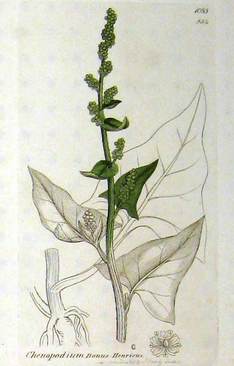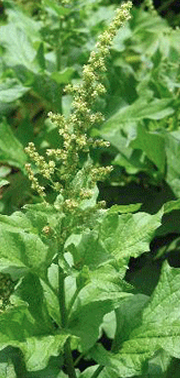 Chenopodium bonus-henricus, Good King Henry Chenopodium bonus-henricus, Good King Henry We can think of at least 180 great forest garden & perennial crops for cold climate Sweden. Want to hear about them? Over the course of the next year we will profile 5 a week on the blog. Perennial plants and crops offer a low energy, oil & resource input based foundation for future-proof agricultures. By default if an agriculture is to be called regenerative the bottom line is that it must be soil building, not soil depleting. Relentless deep tillage & poor soil husbandry (wifery?!) contributes to the majority of the 24 billion tons of topsoil lost every year on planet water. We are going to be focused on holistic polyculture grazing and perennial production at ridgedale over most of the site as this represents the most effective way to restore our degraded landscape, produce high value produce and ensure the future resource base we are managing holistically for in our decision making.  Genus Chenopodium Species bonus-henricus Common Name Good King Henry Form herb Habit clumping Origin Europe Light sun to part Moisture mesic Edible greens, shoots, broccolis Groundcover Yes Good King Henry is a common perennial plant growing up to 400–800 mm tall. The leaves are 50–100 mm long and broad, triangular to diamond-shaped, with a pair of broad pointed lobes near the base, with a slightly waxy, succulent texture. The flowers are produced in a tall, nearly leafless spike 100–300 mm long; each flower is very small (3–5 mm diameter), green, with five sepals. The seeds are reddish-green, 2–3 mm diameter. Young leaves can be raw or cooked. The leaves wilt quickly after picking and so they need to be used as soon after harvesting as possible. The leaves are best in spring and early summer, the older leaves become tough and bitter. The raw leaves should only be eaten in small quantities, see the notes below on toxicity. The cooked leaves make an acceptable spinach substitute, but are best mixed with other leaves, and are a good source of iron. Young flowering shoots can be cooked like brocolli. When grown on good soil, the shoots can be as thick as a pencil and when about 12cm long, they are cut just under the ground, peeled and used like asparagus. Young flower buds can be cooked as a gourmet food. Seed can be ground and mixed with flour then used in making bread etc. The seed is small and fiddly but is easily harvested. It should be soaked in water overnight and thoroughly rinsed before it is used in order to remove any saponins. The leaves and seeds of all members of this genus are more or less edible. However, many of the species in this genus contain saponins, though usually in quantities too small to do any harm. Although toxic, saponins are poorly absorbed by the body and most pass straight through without any problem. They are also broken down to a large extent in the cooking process. Saponins are found in many foods, such as some beans. Saponins are much more toxic to some creatures, such as fish, and hunting tribes have traditionally put large quantities of them in streams, lakes, etc in order to stupefy or kill the fish. The plants also contain some oxalic acid, which in large quantities can lock up some of the nutrients in the food. However, even considering this, they are very nutritious vegetables in reasonable quantities. Cooking the plants will reduce their content of oxalic acid. People with a tendency to rheumatism, arthritis, gout, kidney stones or hyperacidity should take especial caution if including this plant in their diet since it can aggravate their condition. OUR FRIENDS AT PFAF HAVE AN AMAZING DATABASE OF SPECIES (UK BASED);
1 Comment
|
Details
Like us on FB Below for regular updatesStay up to date with customized updates you want to receive
Upcoming coursesArchives
December 2016
Categories
All
|

 RSS Feed
RSS Feed